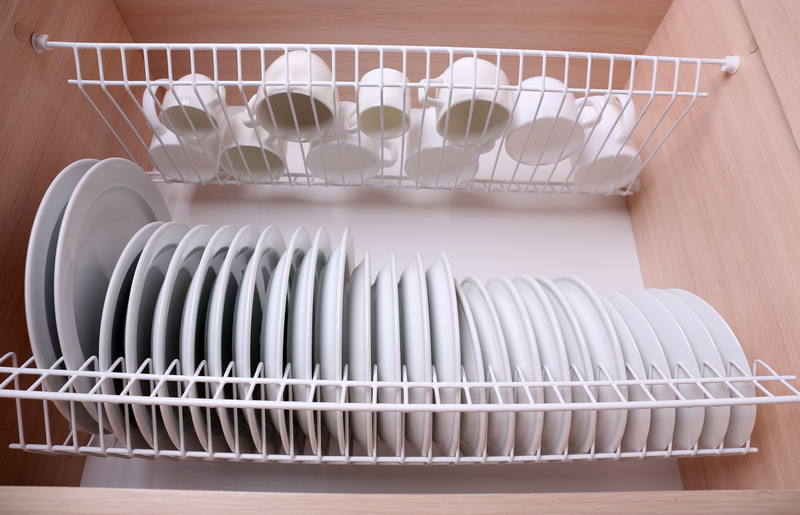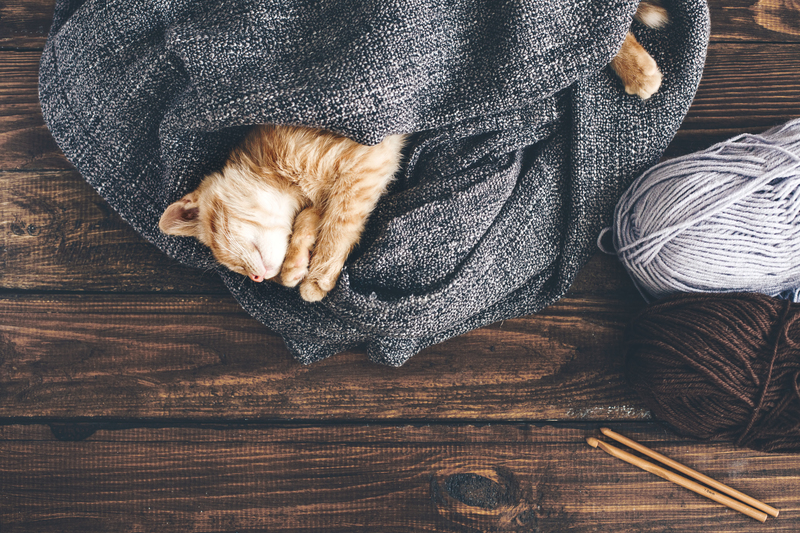Sustainable Ways to Clean and Maintain Your Curtains
Posted on 03/10/2025
Sustainable Ways to Clean and Maintain Your Curtains
Curtains play a crucial role in defining the ambiance, privacy, and comfort of any interior space. Properly maintained, they can last for years, providing not only aesthetic value but also functional benefits like insulation and light control. However, traditional cleaning methods often involve harsh chemicals and wasteful processes that aren't always kind to the environment. This article explores a comprehensive guide to sustainable ways to clean and maintain your curtains, ensuring both your home and planet stay beautiful.
Why Choose Eco-Friendly Curtain Care?
With increasing awareness of our environmental footprint, many homeowners look for ways to make their everyday routines more sustainable. When it comes to curtain maintenance, making eco-conscious choices does more than just help the planet; it also
- Prolongs the life of your curtains, reducing waste
- Improves indoor air quality by avoiding toxic chemicals
- Saves money on frequent replacements
- Protects sensitive fabrics from damage
Considering sustainable curtain cleaning techniques is a smart move for anyone seeking to balance a clean home with environmental stewardship.

Understanding Your Curtain Fabrics
An essential first step in any curtain care routine is to identify the fabric type. Different materials require different treatment to ensure effective, safe cleaning:
- Cotton and Linen: Natural fibers, generally durable but can shrink in high heat.
- Polyester and Synthetics: Often machine washable, but sensitive to high temperatures.
- Silk, Velvet, and Wool: Delicate and may require specialized, gentle cleaning methods.
Always check the care label before beginning any cleaning process. If in doubt, consult a professional for advice.
Routine Maintenance: Keep Curtains Fresh the Eco-Friendly Way
1. Regular Dusting and Vacuuming
The first line of defense in sustainable curtain maintenance is routine dust removal. This helps minimize the frequency of heavy cleaning:
- Use a vacuum cleaner with a soft brush attachment.
- Gently vacuum from top to bottom once or twice a week.
- For high, hard-to-reach curtains, use an extendable duster.
This low-impact method prevents dust and allergens from building up, improves air quality, and keeps curtains looking fresh with minimal effort.
2. Harness the Power of Sunlight and Fresh Air
Nature offers powerful tools to deodorize and refresh curtains sustainability:
- Remove curtains and hang them outside on a breezy day.
- Let sunlight naturally disinfect and freshen the fabric.
- Avoid prolonged, direct sun exposure for delicate and colorful fabrics to prevent fading.
This simple technique can eliminate mild odors and reduce humidity, all without chemicals or power-hungry appliances.
Eco-Friendly Washing Methods
When surface cleaning isn't enough, and a wash is needed, consider these green curtain cleaning practices:
Green Laundry Detergents
Opt for plant-based, biodegradable laundry detergents free from phosphates, synthetic fragrances, and toxins. Look for labels such as:
- EcoCert
- USDA Organic
- EU Ecolabel
These ensure that your chosen solution won't pollute waterways or harm aquatic life.
Cold Water Washing
Whenever possible, wash curtains using cold water settings. This reduces energy consumption and is gentler on both the fabric and the environment.
Hand Washing for Delicate Curtains
For fragile materials like silk or lace:
- Soak gently in a tub or basin with cool water and a small amount of eco-friendly detergent.
- Swirl the curtains softly - avoid wringing or twisting.
- Rinse until the water runs clear and air dry out of direct sunlight.
Hand washing not only preserves delicate fabrics but also prevents microfiber pollution often associated with machine washing synthetics.
Machine Washing Efficiently
- Wash only full loads to maximize water and energy use.
- Select the gentlest wash cycle suitable for the fabric.
- Avoid harsh chemicals like bleach or optical brighteners.
- Place lightweight curtains in a mesh laundry bag to prevent snagging.
These steps contribute to lower environmental impact while ensuring a thorough cleaning.
Spot Cleaning with Natural Products
Stains do happen! Fortunately, you don't need harsh solvents for effective, sustainable spot removal:
- White vinegar: Diluted with an equal part of water, dab on stains with a soft cloth, then blot dry.
- Baking soda: Sprinkle on greasy stains. Let sit, then brush away and spot clean with mild soap and water.
- Lemon juice: Acts as a mild bleach and deodorizer for white or light-colored curtains.
- Cornstarch: Useful for removing oily marks.
Always test any solution in an inconspicuous area first to ensure color-fastness.
Drying Curtains Sustainably
How you dry your curtains can make a major difference in sustainability:
- Air dry whenever possible, either outside or in a well-ventilated room.
- Hang curtains while damp to minimize wrinkles and reduce ironing needs.
- If you must use a dryer, choose an energy-efficient appliance and use the lowest heat setting.
Avoiding the dryer not only saves energy, but also helps preserve the life of your curtains, reducing unnecessary waste.
Ironing and Steaming: Wrinkle-Free the Green Way
To keep your curtains crisp without a heavy ecological cost:
- Use a low-energy handheld steamer to freshen and de-wrinkle curtains quickly.
- Skip chemical fabric sprays; a simple steam is often enough.
- If ironing curtains is necessary, iron while slightly damp for best results and to reduce electricity use.
Tip: Hanging curtains soon after washing can minimize creases, so you may not need to iron at all.
Deterring Pests and Preventing Mold Naturally
Pests and mold can threaten your curtains, especially in humid environments. Try these sustainable preventative measures:
- Lavender sachets and cedar chips in curtain folds can repel moths and insects.
- Reduce humidity by running a dehumidifier or ventilating the room regularly.
- Use a spray of diluted tea tree or eucalyptus oil for additional natural protection against mold and mildew.
These solutions avoid toxin-laden chemical sprays while safeguarding fabric health and longevity.
Repairing Curtains Instead of Replacing
Extending the life of your curtains is among the most sustainable options available:
- Sew loose hems or split seams by hand, using thread made from organic cotton or recycled materials.
- Patch small holes or tears creatively - consider contrasting fabric or decorative stitching.
- Replace broken hooks, rings, or tiebacks with reclaimed or upcycled hardware.
Repairing curtains not only keeps them out of landfills but can refresh the look of your window treatments in unique ways.
Upcycling Old Curtains
When curtains reach the end of their lifespan, don't rush to throw them out. Upcycle them into other useful items, such as:
- Reusable shopping bags
- Pillow covers or cushion slips
- Table runners or napkins
- Patchwork crafts or quilts
This not only reduces waste but can add a personal touch to your home decor.
Choosing Sustainable Curtains
Your efforts start before curtains even reach your home. When purchasing new curtains, consider:
- Opt for natural fibers like organic cotton, linen, or hemp that are grown and processed with minimal chemicals.
- Choose curtains dyed with plant-based or low-impact dyes.
- Look for fair-trade or locally made products to support ethical production and reduce transport emissions.
- Favor brands that practice transparent, eco-friendly sourcing and manufacturing.
Making informed choices ensures an easier path to sustainable curtain maintenance in the long run.
Professional Curtain Cleaning - The Sustainable Way
If professional help is required (especially for heavy, intricate, or very delicate curtains), select a green dry cleaner that uses:
- Non-toxic, biodegradable solvents like liquid CO2 or silicon-based solutions
- Wet cleaning technology, which uses water and specialized detergents instead of perchloroethylene
- Proper wastewater treatment and fabric recycling practices
Always ask about the specific cleaning methods before entrusting your curtains to a service provider.

Environmental Benefits of Sustainable Curtain Care
Switching to sustainable curtain cleaning practices has far-reaching positive effects:
- Reduces chemical pollution that harms ecosystems
- Minimizes energy and water use compared to conventional methods
- Decreases household waste
- Protects your family from exposure to irritants and allergens
- Promotes a culture of care, reuse, and responsible consumption
Conclusion: Make Sustainability a Habit
Maintaining curtains in a sustainable way is easier and more effective than you might think. Through simple habits like mindful washing, gentle drying, and choosing eco-friendly products, you protect both your favorite fabrics and the environment. Upcycling, timely repair, and smart shopping set the stage for an eco-conscious lifestyle, right from your living room windows.
Integrating sustainable curtain cleaning and maintenance into your regular home care routine pays dividends for years to come--ensuring healthy, beautiful spaces for you, your family, and the wider world.
Embrace these sustainable methods for curtain care today, and enjoy cleaner air, lower costs, and peace of mind--naturally!




